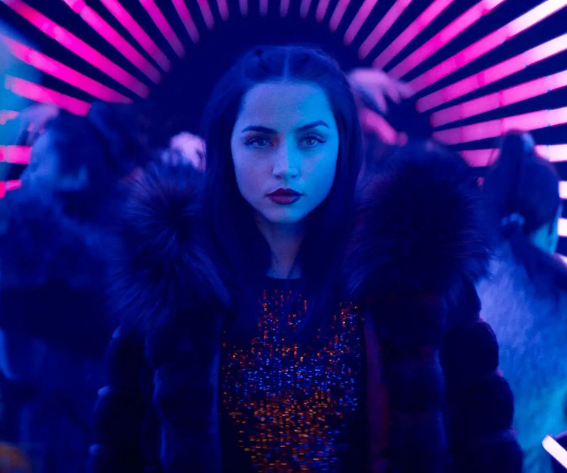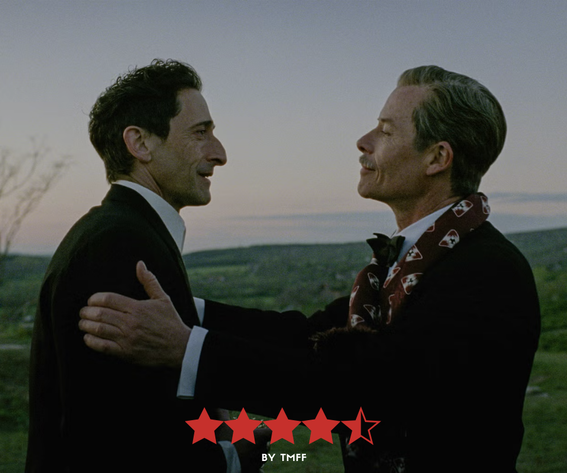After the success of A Ghost Story in 2017 and The Old Man & the Gun in 2018, David Lowery has delivered a remarkable and genuinely innovative medieval fantasy in The Green Knight that’ll be analyzed for years to come.
The Green Knight follows King Arthur’s stubborn nephew Gawain (Dev Patel), who embarks on a courageous quest to confront the Green Knight, a mysterious giant who appears at Camelot. Risking his head and potential death, Gawain sets off on an epic adventure to prove himself before his family and court.
Based on the 14th-century poem Sir Gawain and the Green Knight, but in a much more darkened and dismal adaptation, the trailers didn’t give a complete sense of what to expect with The Green Knight. Is it a lower-budget Lord of the Rings? Or is it going to be another lame medieval fantasy film like the 2004 King Arthur movie starring Clive Owen?
The Green Knight doesn’t fall under any current category in the fantasy spectrum and is uniquely its own genre in a way. I haven’t seen a fantasy film like this done in such an avant-garde experimental method that’s also exciting and understandable. We get what Gawain’s quest is, but the ride along the way is a trip to say the least.
The Quest of Sir Gawain and Deepened Messaging
The quest of Sir Gawain is a simple one to follow initially. The Green Knight barges into Arthur’s court challenges anyone who is able to land a blow on him to win his green ax. However, the winner must travel to the Green Chapel next Christmas and receive an equal blow in return.
As you can predict, Gawain takes up the challenge, and instead of fighting, the Green Knight kneels, lowers his head, and Gawain decapitates him. Instead of dying, The Green Knight rises, lifts his severed head, reminds Gawain of the bargain, and rides off from the castle in a cackling laugh.
❝It’s gratifying when a film really makes you think about what you’re watching.❞
Now Gawain must follow through with his actions for the sake of bravery and nobility, a running theme that has plagued Gawain throughout all of his life. Even when we’re introduced Gawain, he’s hungover from a night at the brothel before Christmas, not exactly a Nobel honor for someone in his position.
Gawain’s quest is much deeper than what meets the surface, revolving around nobility, honor, courage, and doing what’s right. Without spoiling the plot, it’s gratifying when a film really makes you think about what you’re watching. Not in the sense that the film is entirely discombobulated, but in a way where it adds to the film.
The Use of CGI and Gorgeous Cinematography
Unlike most modern fantasy epics, The Green Knight doesn’t heavily rely on CGI. With only a budget of $15 million, it’s quite remarkable what David Lowery was able to show cinematically in the film.
The cinematography of Andrew Droz Palermo is breathtaking; every shot is stunning, ethereal, and filled with a novel sentiment. I also loved how CGI is tastefully used and not a driving point of the film, with the scene with the giants especially blowing me away.
Immaculate Acting
As great as the film’s setting, look, and cinematography are, none of that matters if the acting isn’t great. The Green Knight’s entire cast is unbelievably superb. Dev Patel kills his role as Sir Gawain; how has Dev Patel not one an Oscar yet?
Not to mention the supporting cast of Alicia Vikander, Joel Edgerton, Sarita Choudhury, Sean Harris, and Ralph Ineson, all of which are great.
Although there are some minor pacing issues throughout it, The Green Knight is one of those films that’ll be talked about for years to come. It has the aura of Blade Runner and was done in such an innovative manner that it’s a film that feels like a breath of fresh air.











Leave a reply